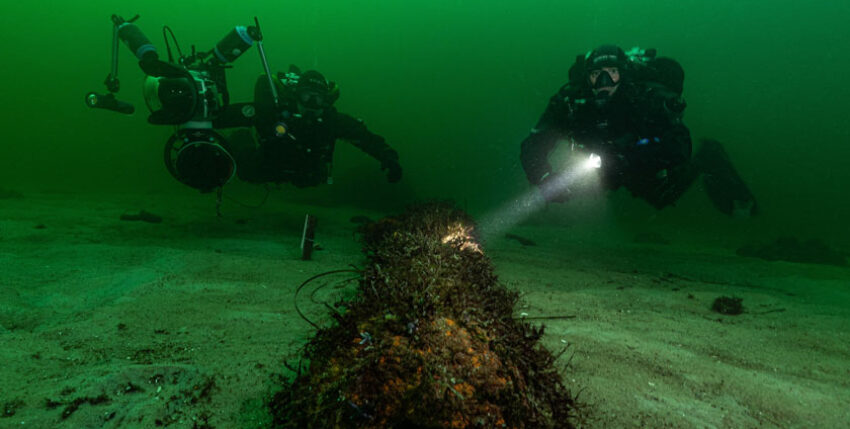Modern technology is being used to track down many shipwrecks from the Second World War in the Baltic Sea. Companies and amateur divers are responsible for the increasing plundering of sea war burial sites.
Pillau on 11 April 1945: the small East Prussian Baltic port is overcrowded with refugees. On this Wednesday morning, significantly more people than before crowd towards the small inner harbour. On 9 April, the German occupying forces of Königsberg surrendered to the Red Army. The city is only 30 kilometres away from Pillau. Tens of thousands of civilian refugees and soldiers are now also hoping to be rescued by a ship that will take them westwards. But there are only a few ships in the harbour. One of them is the KARLSRUHE, a cargo steamer owned by the Hamburg shipping company Ernst Russ. The KARLSRUHE is not a steamer the size of a WILHELM GUSTLOFF or a STEUBEN. She is only 66 metres long and displaces just 897 gross register tonnes. Nevertheless, her shallow draught and small size also give the ship some advantages - for example when operating in shallow waters. Larger ships are now increasingly becoming the target of air attacks. It was only on 9 April that the steamer VALE was sunk by bombs in Pillau. The ship was not yet fully crewed at the time, but 250 people died in the sinking.
Access?
- Access to all articles from the marineforum magazine
- Easy payment via PayPal, direct debit or credit card
- The subscription can be cancelled at any time free of charge
- Free of charge for MOV members










